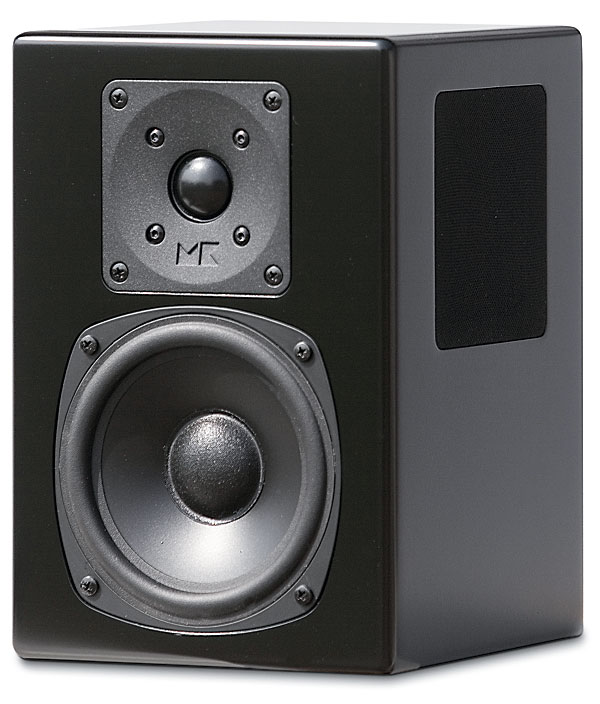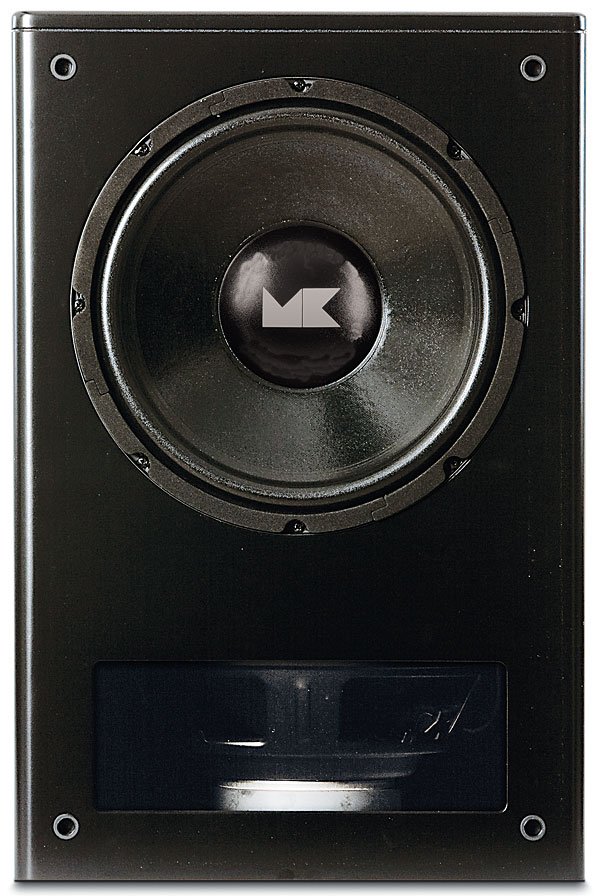MK Sound 950 Speaker System Page 2
Another aspect the speakers share is what MK calls its PhaseFocused crossovers. Unlike many speaker manufacturers that design crossover networks using only measurements of the drivers’ frequency response on one axis, MK measures response characteristics at various angles in both the vertical and horizontal planes and tries to optimize the speaker’s three-dimensional output. The desired result is smooth response over a much wider listening area. That aspect is especially welcome in a speaker that’s used for a home theater in which there will typically be more than one person watching (and listening). Something that’s cool about the LCR950’s aesthetics is the metal grille that magically snaps in place thanks to invisible magnets recessed behind the finish of the front baffle. However, some folks may not like the fact that the drivers are quite visible through the perforations on the grille. (The MK Sound logo on the front is a bit big, too.) Others will like the appearance because of its hightech look.
Two for the Price of One
MK Sound’s SUR95T surround speaker is one of the most unusual you’ll find on the market. As you probably know, there are advantages and disadvantages to using direct-radiating speakers (the typical bookshelf speaker), and the same goes for dipole speakers. The former can give you better surround-channel localization, which some consider best for multichannel music listening, while the latter creates a more diffuse surround field that’s recommended (by THX and others) for both movies and music. Rather than sacrifice the benefits of one design or the other, MK Sound engineered a unique tripole speaker that simultaneously acts as both a direct radiator and a dipole—so you get the benefits of both types of speaker while minimizing the drawbacks, all in one cabinet. The SUR95T incorporates a tweeter and midbass driver on the front baffle (the direct radiating part), while special 3-inch midtweeters are mounted on the slightly angled left and right sides of the cabinet (for the dipole part).

Because of this unique dual nature, placement of the SUR95T is a little more critical than with other surround speakers in order to get the best performance—and when you think about it, it’s not surprising since you’re actually trying to position two different speakers. The front-firing tweeter should be the closest driver to your ears; so if you’re mounting the speakers above ear level, MK recommends that you use them upside down with the tweeter positioned below the woofer.
Pushmi-Pullyu
I suppose MK Sound could have gotten the idea from Dr. Dolittle, but the push-pull dual-driver configuration in the MX250 subwoofer isn’t a freak of nature nor a storyteller’s fantasy. Instead, it’s a clever use of physics (“Oh, Mr. Physics, you’ve done it again!”) that both increases the output of the sub by 6 decibels (over a sub with an equivalent single driver) and is supposed to reduce even-order harmonic distortion dramatically. So what’s so special about a subwoofer with two drivers? Isn’t that common? In many cases, subwoofers with two drivers include only one active driver with the second being a passive radiator. This can help extend the system’s bass, but it does little to reduce distortion.

The clever part is that, in addition to both drivers being active, one driver is mounted on the front of the cabinet while the second driver is mounted inverted. In other words, the front of the second driver’s cone faces to the inside of the cabinet, while the back side (including the rear of the cone, the magnet structure, and the frame) faces down to the outside. If you just ran the drivers normally in this configuration, they’d do a great job of cancelling each other out, since the sound of each would be out of phase relative to the other. Instead, they run out of phase both electrically and, by virtue of the placement, mechanically. Acoustically, they’re in phase and wind up pumping a lot of bass into the room. The other big advantage is that since the position of each cone is opposite of the other, as one pushes the other pulls. So even-order harmonic distortion caused by nonlinearities in the cones’ motion is inherently cancelled out.
- Log in or register to post comments



































































